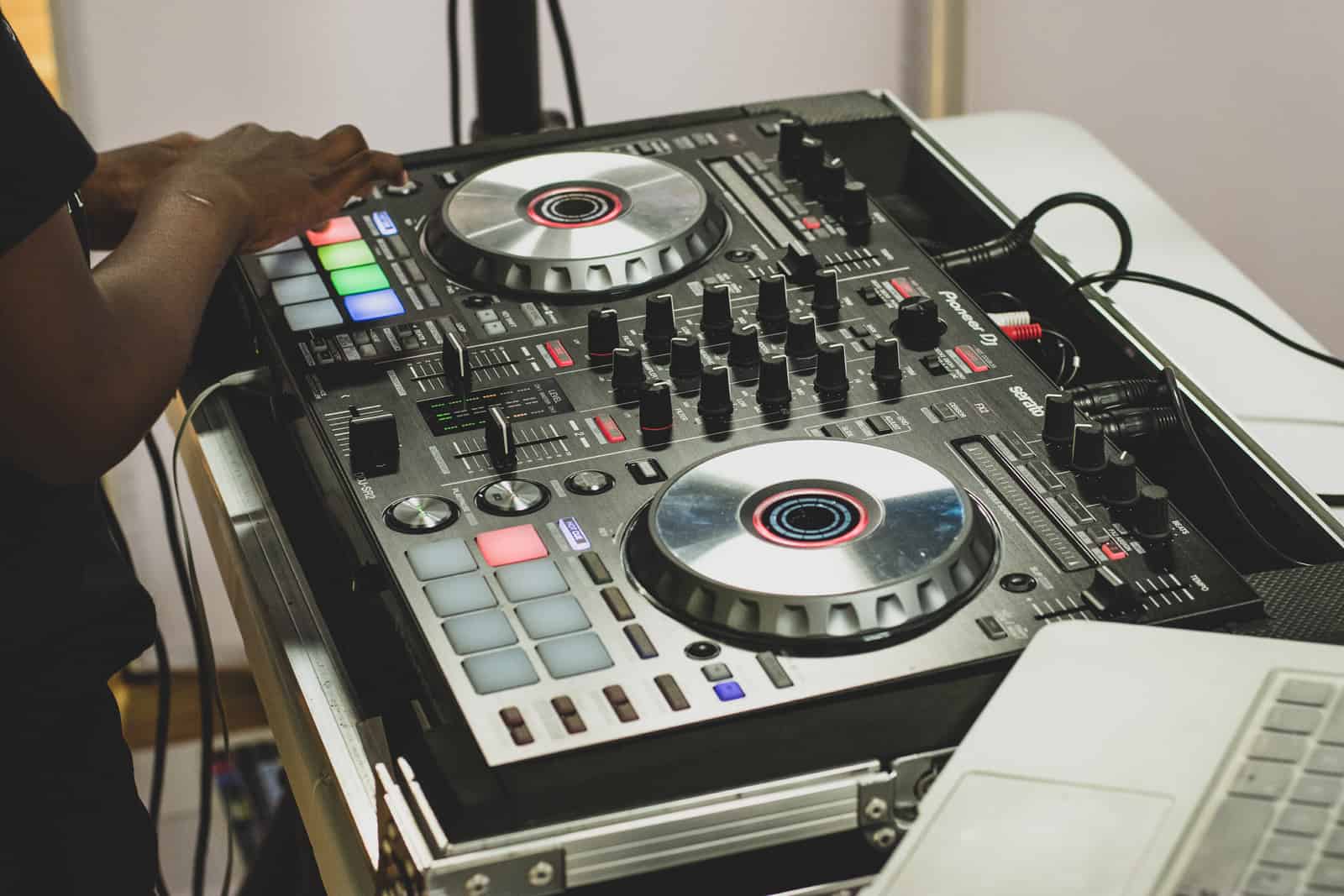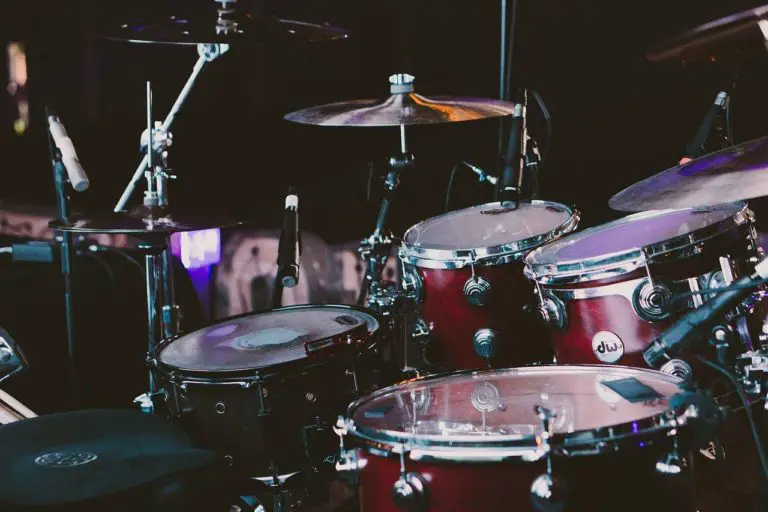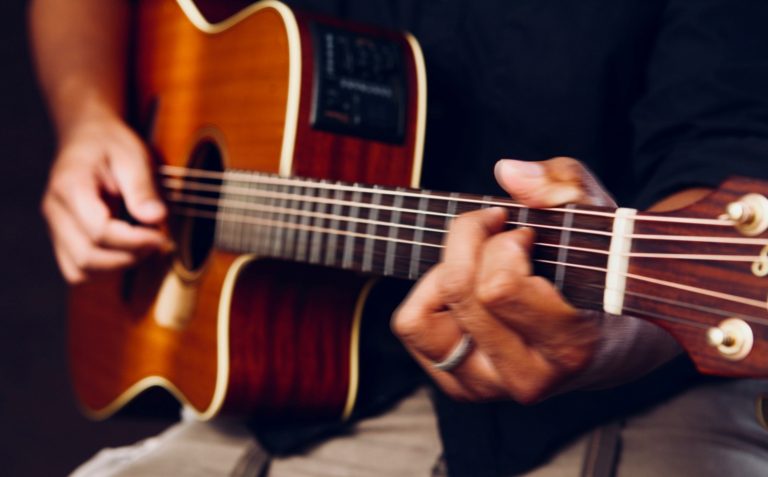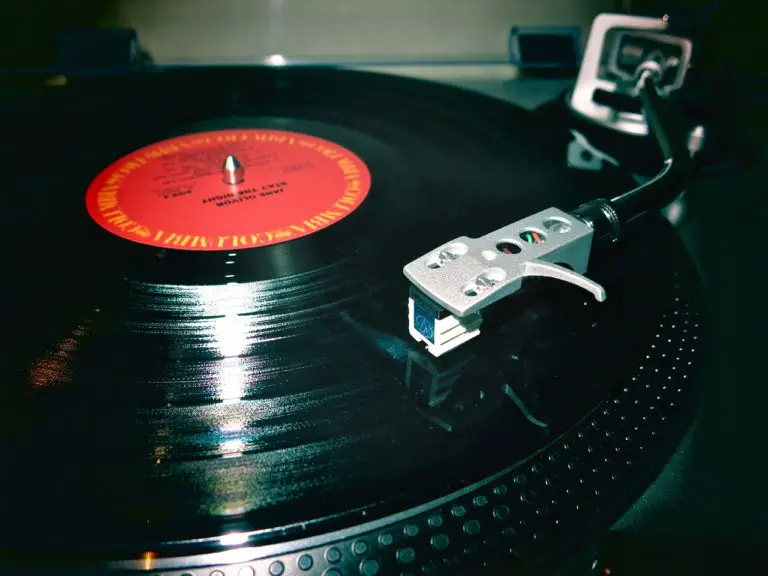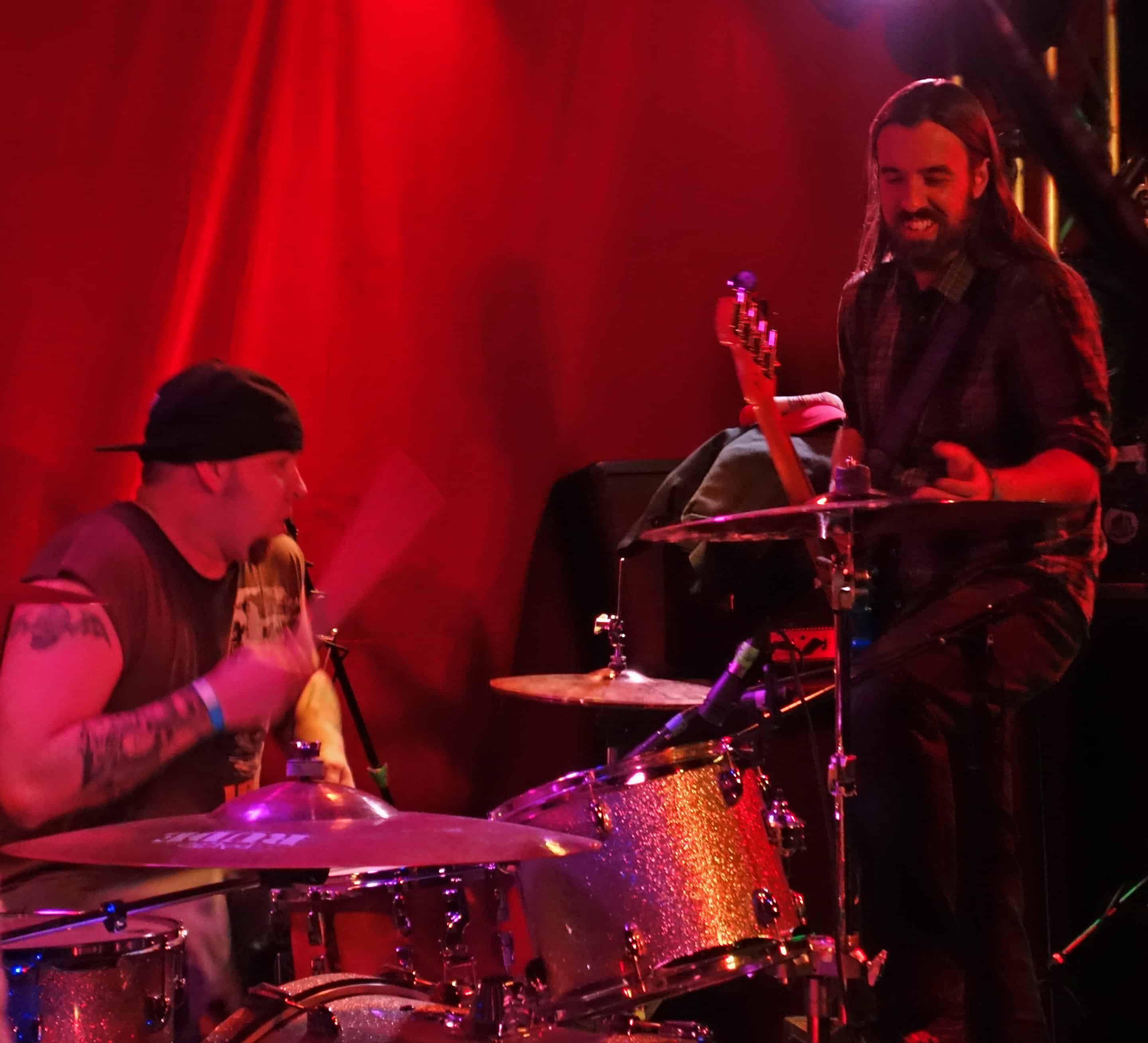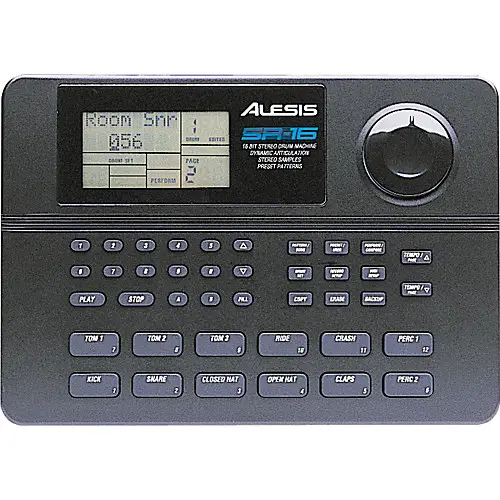Why Do Bands Use Backing Tracks During Live Performances?
If you have ever been to a live show, you probably have noticed some artists use pre-recorded background tracks. Your first thought may draw yourself to how lazy that is. But not all of us want to see 30 members of a band on stage at once.
That brings us to the question of the day.
Why do bands use background tracks during live performances? Backtracks enhance the band’s sound at live shows. Backing tracks are an alternative to hiring additional musicians for a small part of a single song. Additionally, some of these parts are too complex to play during live performances.
Below, we will get into the details behind why it is common to see multiple tracks.
What are Backing Tracks?
Backing tracks are pre-recorded parts used in place of live music. We will list out the reasons you may use them below.
Definition and Components
Simply put, backing tracks are pre-recorded pieces of music that contain instruments, vocals, or other sounds that support a live performance or a recording. They fill in the gaps where certain instruments or voices are missing, helping to create a fuller sound. They might include rhythms, harmonies, or even special effects that are hard to produce live.
Historical Context
Backing tracks have been around for a long time, seeing more use as technology in the music industry advanced. Initially, they helped artists add depth to their studio recordings. Over time, their use expanded to live performances, allowing bands to deliver richer sounds without increasing the number of musicians on stage.
Role in Contemporary Music
Today, many bands and solo artists use backing tracks to enhance their live performances. They allow artists to add complex sounds that would be difficult to create on stage, helping to produce a sound that’s closer to a polished studio recording while still performing live.
Applications in Different Settings
Backing tracks are also popular in settings like karaoke, where they provide the music for people to sing along to. They are useful in the production of TV shows, movies, and theater productions, helping to create a specific atmosphere or mood through music and sound.
Why Do Bands Use Backing Tracks?
Band Member is Not Available
Suppose you have a band member who is out sick with the flu with no one else able to play their part. You may replace them with a pre-recorded song. Bands are also just as likely to cancel the show in this case.
Nobody Can Play The Instrument
If you have ever been to a live dubstep show, they use a large number of pre-recorded tracks spliced over. In this case, this is because the one-man-band doesn’t have the skill to play the instrument. Although they do have to be talented enough in music to know what tracks best go together.
Budgetary Limitations
Good help is hard to find these days. That is especially true when you have to think about hiring another guitarist or vocalist. As a result, recorded backing tracks are a lot more inexpensive than a whole other person.
Creating a Unique Sound
If you hear the vocalist somehow split themselves into three different ranges at once, you are likely not listening to a musical chimera. Instead, the lead vocal may record their voice at multiple pitches to create a unique sound.
You can hear this typically during studio recordings, which is why live music and recorded music are so different. These are known as recorded backing vocals and work well to add interesting flairs to your music.
Backing tracks are not cheating. Provided that you use them to enhance your musical performance, the entire thing is a show regardless. These cannot replace talented musicians, only improve them.
Adding Visual Elements: Synchronization with Backing Tracks
When we discuss the role of backing tracks in contemporary music performances, it is imperative to highlight how they can synchronize with visual elements to create a more immersive experience for the audience. Let’s explore the dynamic between backing tracks and visual enhancements in live settings.
Enhancing the Visual Narrative
Backing tracks offer artists a unique opportunity to align their visual narrative precisely with the music. This means timed lighting effects, coordinated visual displays on LED screens, and even pyrotechnics can be perfectly synced with the music, thereby creating a more dramatic and compelling live show.
Facilitating Complex Production Designs
Live shows nowadays often involve intricate production designs with moving parts, changing sets, and dynamic lighting. Backing tracks help in smoothening transitions and ensuring a seamless flow, where the audio and visual elements work in harmony to craft a cohesive performance narrative.
Augmented and Virtual Reality Integrations
With the advancements in technology, we see an increased integration of augmented (AR) and virtual reality (VR) in live performances. Backing tracks facilitate these integrations, allowing for timed visual effects that can elevate the concert experience to a new dimension, offering fans something beyond just a musical performance.
Artist Expression and Storytelling
Artists often have a vision for their performances that goes beyond the auditory. Backing tracks allow for the realization of these visions through synchronized visual storytelling, where each song can be accompanied by visuals that reflect its narrative, enhancing the emotional resonance and the depth of the performance.
Technical Considerations
While adding visual elements through the synchronization with backing tracks can significantly enhance the live performance, it also brings in a set of technical considerations. It requires a meticulous planning process and often involves the integration of advanced technologies to ensure that the synchronization is flawless, adding layers to the pre-production process of any show.
What are the Drawbacks to Use a Backing Track During Your Live Show?
When using a recorded track, there are some additional headaches for your sound engineer. We will list those headaches below.
Get Used To Click Tracks
A click track is the in-ear metronome you are going to need to ensure everything is on the same beat. While some musicians have a “good feeling” for how their timing is, it is pretty common to see a click track in use.
Without a click track, you can expect your music to sound a bit off. So get used to having one set up, at least during the early days.
A Heavier Amount of Pre-Show Setup
Using pre-recorded material means that you will have to ensure that this material is ready to go before the show. That means you will have to hook in the extra equipment, check the sound files to be sure they haven’t corrupted, and check your backups just in case they stop working. There is a lot more prep work that goes into setting up a show, even before handling pre-recorded vocals.
Expect Technical Difficulties
All live concerts run into issues eventually. Be prepared for a higher potential of those when you add computer programs to this. It is doubly true if you purchased used technology for this, which is common among smaller bands.
Be prepared to perform a version without the backup vocals or guitar should something go wrong. It is not something we are hoping for, but a good sound engineer always has a backup strategy.
Do Backing Tracks Take Work Away From Musicians?
Whether you do or you don’t use backing tracks, you have probably heard of this discussion at some point. Why would a bar who has a limited musician budget pay for a four-person band at $500 when they could get a one-person “band” at a quarter of the price? It’s a fair question and one that is hard to answer.
It is especially disturbing a world where producers own the right to much musical talent. This practice leaves a dwindling field of live music venues as the only place musicians can get hired, and those are having to compete with pre-recorded individuals.
Many owners of bars and venues have considered this, and some of them prefer to hire actual musicians. Good people will appreciate the real talent that can be performed live over a recording.
However, don’t take away from what studio producers can do. They can produce some fantastic content that many enjoy. Some people in the business may have different opinions.
What Do Famous Musicians Think About Pre-Recorded Tracks?
In an interview with BlabberMouth, Scott Ian From Anthrax shares his frustration with those who overdo it. He goes as far as to state that musicians who have too many recorded backings should have it printed on their ticket. Granted, he believes it can be done well through bands like Rob Zombie and Pink Floyd.
Phil Collen from Def Leopard believes that there are specific allowances for that. For example, “Rocket” is a song by them that uses a drum loop that would be impossible to play live. However, they state that they do their vocals live, which is a classic feat when compared to some other bands.
The Audience Perspective: Does It Matter to Fans?
Understanding whether the use of backing tracks matters to fans can be a crucial aspect of gauging their acceptance in live performances. Let’s delve into the various perspectives and opinions held by audiences globally.
Meeting Expectations for High-Quality Sound
In the digital age, fans have grown accustomed to studio-quality recordings readily available on streaming platforms. This has consequently raised expectations for live performances. Many fans appreciate the use of backing tracks as they ensure a level of quality and richness in the sound, aligning with the polished versions they are familiar with from the artist’s recordings.
Purists and the Quest for Authenticity
Despite the widespread acceptance of backing tracks, there remains a subset of the audience — often referred to as purists — who value raw and authentic performances over enhanced sound quality. For these individuals, the use of backing tracks can sometimes feel like a dilution of the genuine live experience, as they prefer the spontaneity and unique variations that come with live-only music.
The Unnoticed Presence
A significant portion of the audience might not even realize the presence of backing tracks during a performance. This is because the tracks are generally designed to blend seamlessly with live instruments and vocals, providing a subtle support that goes unnoticed, yet adds a fuller sound to the performance. For this group, the use of backing tracks doesn’t significantly alter their experience as long as the core live elements remain dominant.
What Are Some Examples of Pre-Recorded Tracks Working?
When it comes to live performances with huge dance numbers, it would be virtually impossible to do both at the same time. Take a look at Beyoncé at the 2013 Super Bowl Halftime Show.
Beyoncé has a lot of talent. But if she were to perform these elaborate dance maneuvers while also hiring a separate musician for each track used here, it would not have come together at this level of quality.
In this case, it is more of an example of a live tv show with performing arts, so you may not expect this level of performance at your local dive bar. Where they play doesn’t mean they are not talented.
How Do You Set Up A Pre-Recorded Track System?
If you would like to take advantage of setting up your live track playback, we will give you a short guide on how to get started. Let’s say you are the opening act for some big local band, and you want to blow the audience away with the quality. Below are the steps you could take.
Have an Ample Amount of Setup Time
Given all of the extra steps, you will have to take, be sure that you have enough setup time before the show. Let the venue owners know about this, as they will appreciate the information ahead of schedule. It is especially true if it is your first time combining recorded music and live performance.
Make Sure You Have Your Equipment
A short guide on drummingreview.com suggests using an iPod, a small mixer, and your computer for your playback system. However, you could feasibly limit this to your computer and a mixing program. Just make sure you have the right audio cable that will work with the local speaker system.
You will also want to invest in an audio interface so you can feasibly mix tracks seamlessly into whats going on. Combine that with a good set of headphones, and the click track can go through your ears so you can ensure everything is balanced correctly.
Pick the Right Software
There is a wide variety of software one can choose to assist them. Many people in this industry have suggested Ableton Live, as they make it for this sort of thing. You can also feasibly use other music applications that have live functions. These include GarageBand and Fruity Loops.
Try some trials on for size, and you can decide on your favorite interface. If it isn’t comfortable for you, you aren’t going to be seamless as a sound engineer.
Test it Before The Show
Well, before the show begins, you are going to want to test all of these features to be sure they sink. Even if you don’t use recorded backing tracks and a playback system, can you imagine picking your set list five minutes before your show?
While this may be cliche, pick out a spot where you can practice live performances. Whether it be a basement or a garage, either will do as long as you have the space for it. As long as everything works there, most of it should work at the show.
Have A Backup Plan
In the worst-case scenario, everything can fail before your eyes. It will happen to the most experienced musicians. But the best in the business always has a backup plan.
If all of your laptops short and someone got excited and kicked over your table, it is always good to be ready to play like your standard musician.
Conclusion
Backing tracks receive a bad rap, but only if you use it as a replacement for something in your band can do. If your lead guitarist says they would prefer drinking a soda instead of playing their solo today, your group probably is not destined for success.
On the other hand, many bands and musicians have proven that they can use this to enhance their play. In many cases, they will improve other people’s performances by adding them to their own. There are many tastes in music. You don’t have to like it, someone else probably does.

